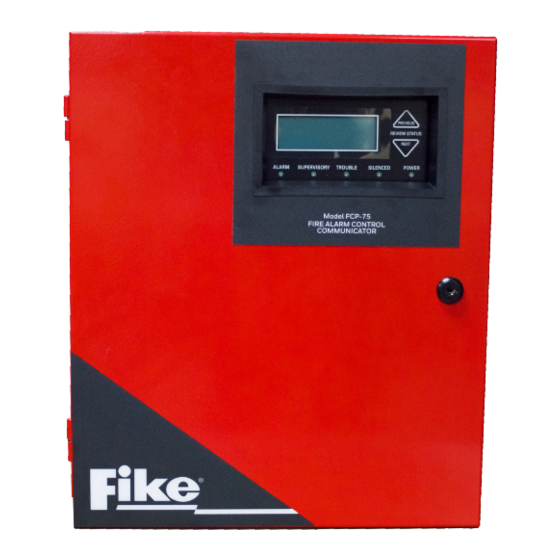
Fike FCP-75 Manuals
Manuals and User Guides for Fike FCP-75. We have 2 Fike FCP-75 manuals available for free PDF download: Instruction Manual, Manual
Fike FCP-75 Instruction Manual (146 pages)
Addressable Fire Alarm Control Panel
Brand: Fike
|
Category: Control Panel
|
Size: 2 MB
Table of Contents
-
Inventory15
-
SBUS Wiring24
-
Edit Name61
-
Modules84
-
Zone85
-
1: Edit Zone85
-
Group88
-
Point89
-
Phone Lines93
-
Alarm Verify97
-
1: LCD Display100
-
2: Banner100
-
Menu System101
-
Basic Operation101
-
10: Reset Alarms103
-
Function Keys111
-
Troubleshooting122
-
2: Event History123
Advertisement
Fike FCP-75 Manual (122 pages)
Addressable Fire Alarm Control Panel
Brand: Fike
|
Category: Control Panel
|
Size: 1 MB
Table of Contents
-
Inventory15
-
1: Wiring51
-
Modules70
-
Zone71
-
1: Edit Zone71
-
Group74
-
Point75
-
2: Banner87
-
Menu System87
-
Troubleshooting111
-
2: Event History112

